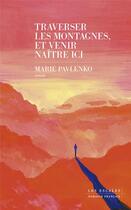-
Nombre de pages : (-)
-
Collection :
(-)
-
Genre :
(-)
-
Thème :
Non attribué
-
Prix littéraire(s) :
(-)
Résumé:
When a retiring worker is given a gold watch, Jessa Gamble observes, she symbolically gets back the freedom to keep her own hours. There were no mechanical timepieces before the industrial revolution. The day's activities were dictated by the spinning Earth's circuit around the Sun and by the... Voir plus
When a retiring worker is given a gold watch, Jessa Gamble observes, she symbolically gets back the freedom to keep her own hours. There were no mechanical timepieces before the industrial revolution. The day's activities were dictated by the spinning Earth's circuit around the Sun and by the seasons. Because people adjusted their lives to these natural rhythms, they may have experienced less stress than their modern counterparts. They almost certainly enjoyed more sleep. In The Siesta and the Midnight Sun, award-winning science writer Jessa Gamble explores the continuing significance of the biological clocks that governed our lives before modern technology annihilated the night. She describes experiments that show both rats and people adhere to a 24-hour schedule even when deprived of daylight. When our days are disrupted by shift work, jet lag or space travel, things go wrong. The disastrous chemical leak at Bhopal, India and the calamitous launch of the Space Shuttle Challenger both were caused partly by sleepless workers. Insomnia is rampant in the Western world. By investigating patterns of behaviour in many societies both past and current, Gamble gives us a glimpse of different ways of scheduling time. In this superbly insightful and entertaining book she examines the crises and creative adaptations that occur on the embattled border where biology, culture and technology clash.
Donner votre avis














